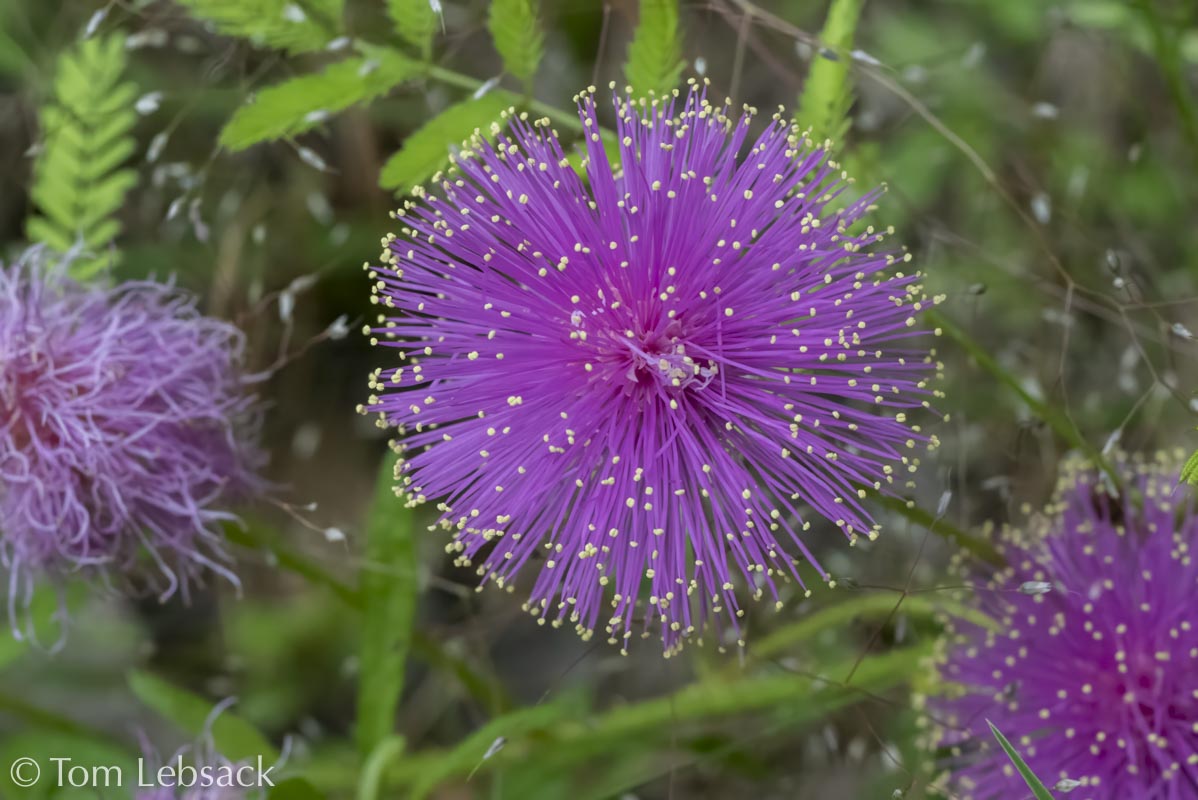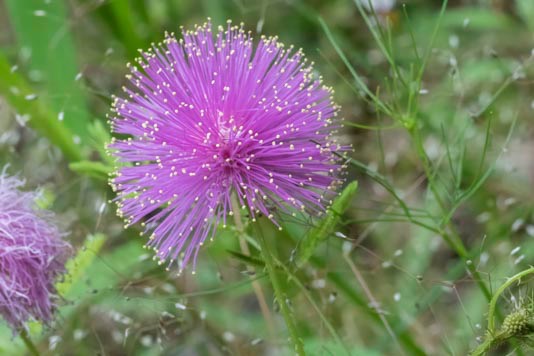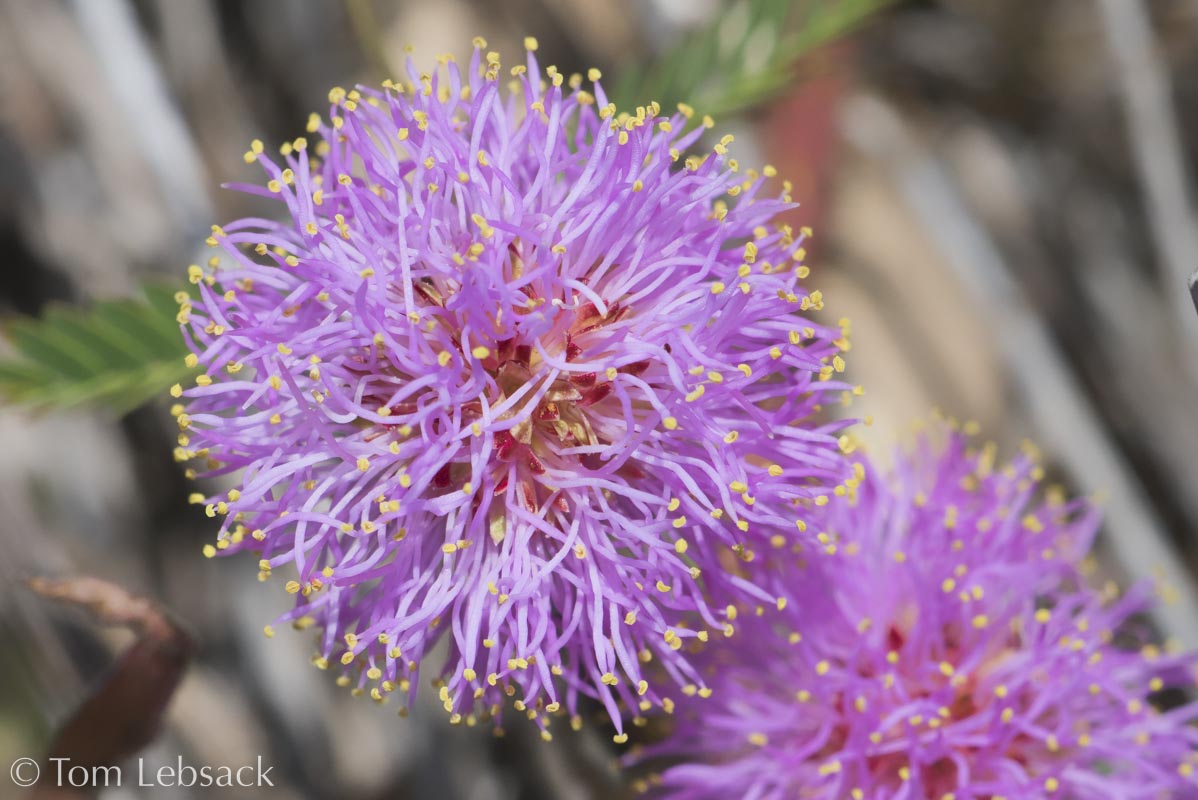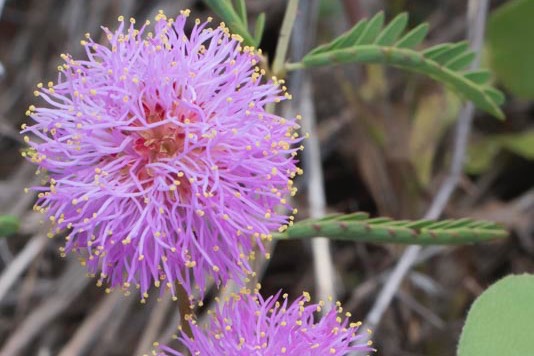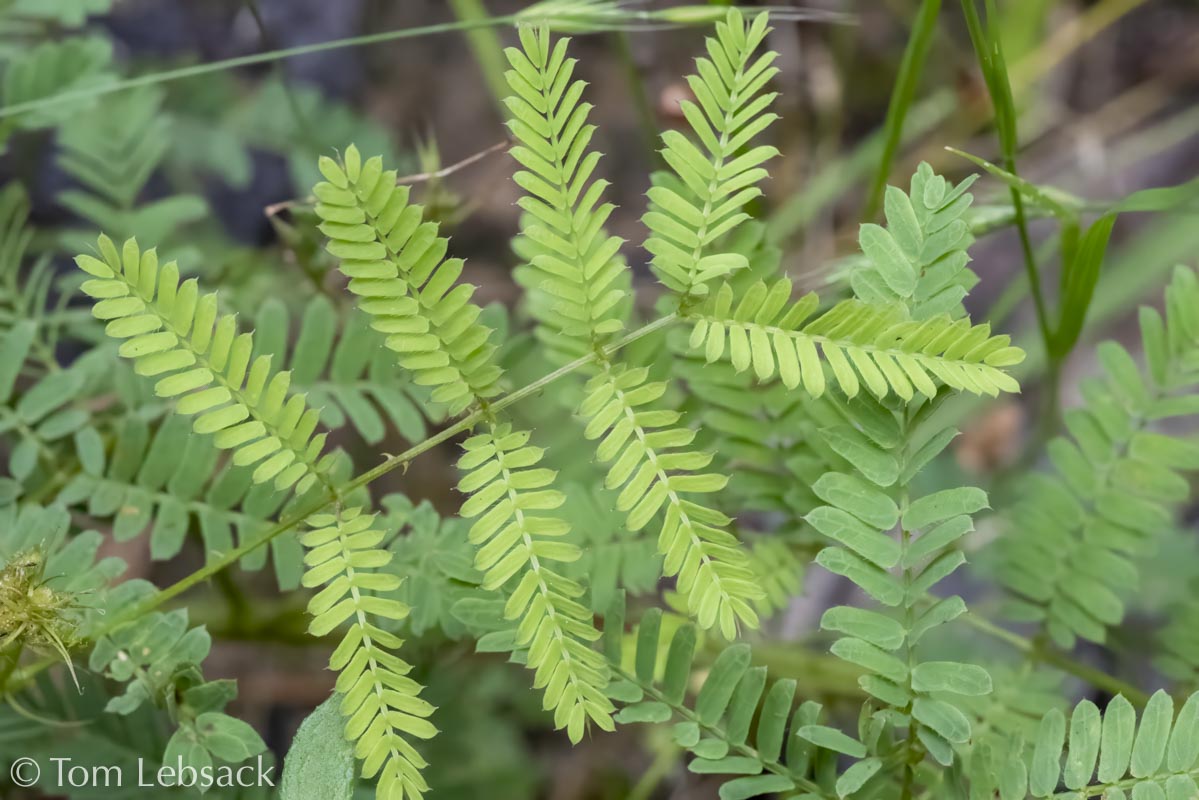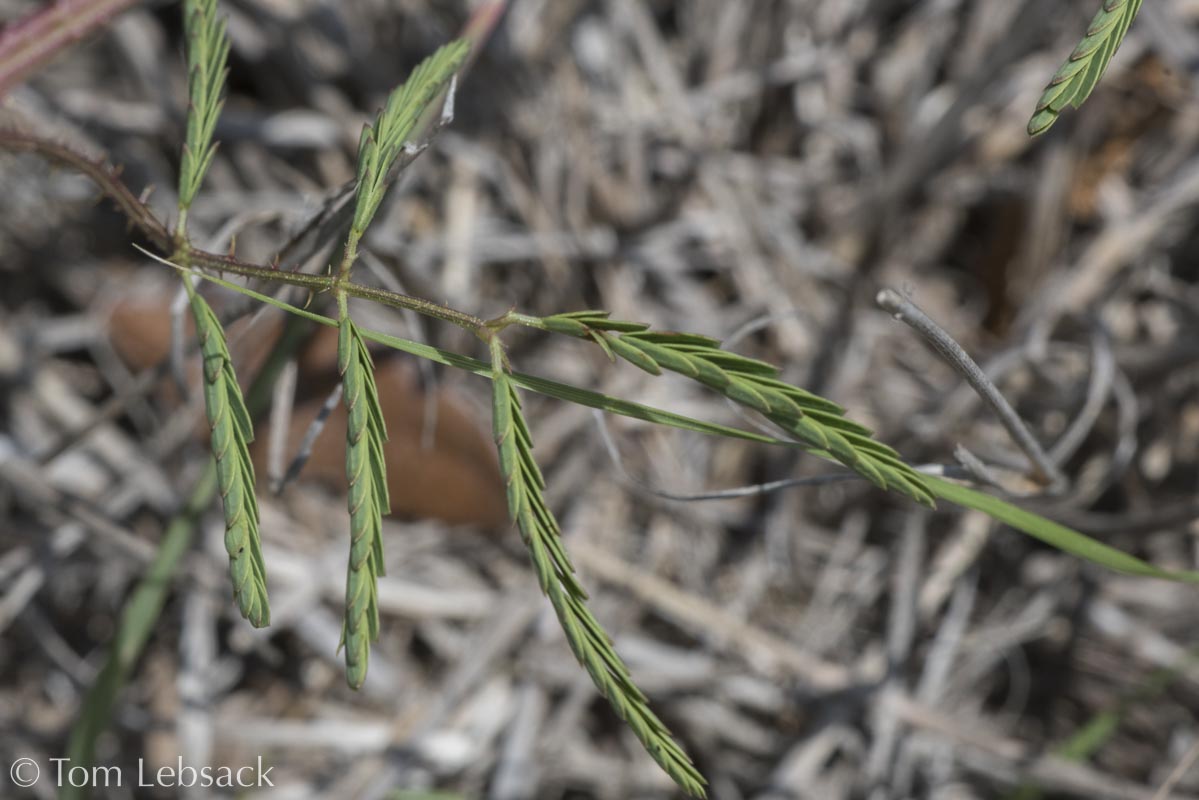Texas Wildbuds
Mimosa nuttallii
(Nuttall's Sensitive-briar)
| Scientific Name | Mimosa nuttallii | USDA PLANTS Symbol | MINU6 |
| Common Name | Nuttall's Sensitive-briar, Catclaw Sensitive-briar | ITIS Taxonomic Serial No. | 507832 |
| Family | Fabaceae (Pea) | Wildflower Center Ref. | Click Here |
| Description | Habitat: Sandy or silty soils in disturbed areas, grasslands, woodland openings. Plant: Trailing, prostrate, branched perennial, ribbed stems 2 to 6 feet long with recurved (bent-back) prickles. Leaves: Bi-pinnately compound on prickly stalks with 4 to 8 pairs of primary leaflets, each 1 to 2 inches long, divided into 8 to 15 pairs of small secondary leaflets each 5/16-inch long that fold up when disturbed; each leaflet has a conspicuous midrib and sideribs beneath. Inflorescence: Dense pink, ball-shaped inflorescence 1/2 to 3/4-inch in diameter with many very small individual flowers each with 5 petals and 8 to 12 protruding stamens with pink filaments and yellow anthers. Bloom Period: April to September. Fruit: Mature fruit is nearly cylindrically-shaped. References: "Wildflowers of Texas" by Geyata Ajilsvgi and Kansas Wildflowers and Grasses. Notes: Leaflets are sensitive to touch and will fold up when disturbed. Very similar to M. roemeriana, except for conspicuous midribs on leaflets, ribbed stems and shape of the fruit. |
BONAP Distribution Map Map Color Key Map Color Key |
Texas Status: Native |
Banner photo of Castilleja indivisa and Lupinus ssp. taken along FM 1323 north of Johnson City, Blanco County
© Tom Lebsack 2025
Every attempt is made to provide accurate, up-to-date, and relevant information, but the completeness or accuracy of any information presented on this website cannot be guaranteed. I use authoritative references to insure high standards of accuracy and review and update the information frequently.
